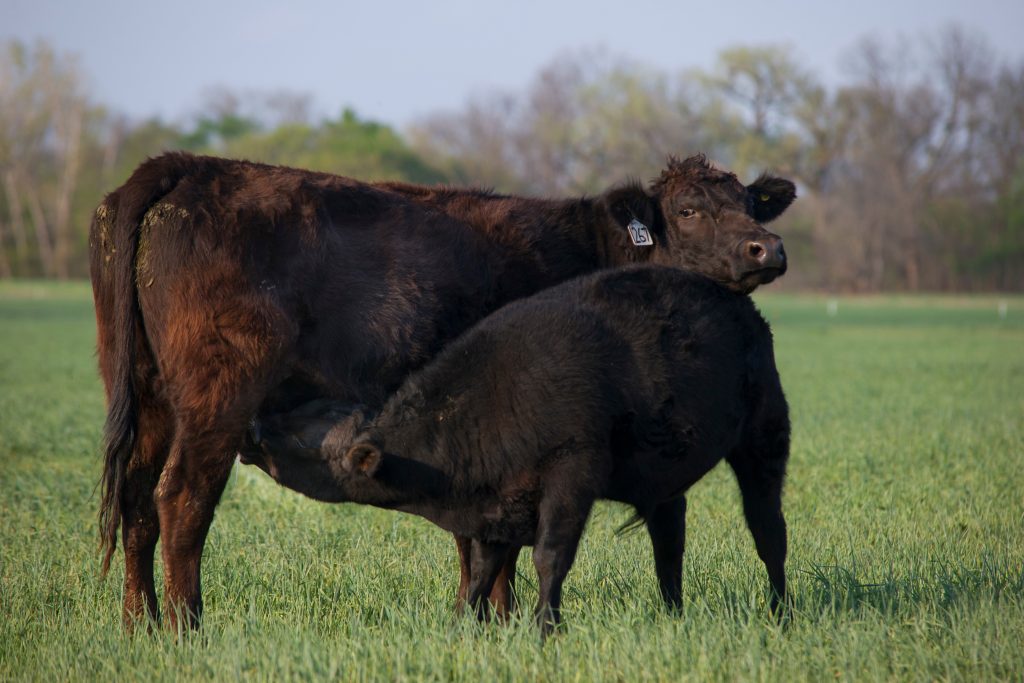
In this episode of Cow-Calf Corner, Kellie Curry Raper, Oklahoma State University Extension Livestock Marketing Economist talks about castrating calves.
A look at previous numbers collected by OSU Extension specialists indicate that, in 2013, 10.3% of the lots coming through the livestock auction at selected weaned and feeder calf sales were lots containing bulls. That number dropped to 7.1% in 2014, 4.7% in 2020 and 2022 data indicate that only 5% of lots at these selected sales contained uncastrated males. With the exception of a blip at 12% in 2021 – likely attributable in part to an untimely extended arctic blast – this decrease is a trend in the right direction.
Castration of bull calves prior to marketing has long been encouraged by Extension educators and the recommendation is backed by objective research, from multiple perspectives. From a health perspective, calves castrated at less than three months old experience lower stress levels, less sickness, and lower rates of death loss (Campbell). From an animal welfare perspective, older calves experience more stress at castration and a longer period of stress-related impacts relative to calves castrated at birth or at branding. Bull calves also show more aggressive behavior while uncastrated, implying greater risks of injury for other animals and for humans. From a beef quality perspective, calves weighing more than 500 pounds at castration generally have carcasses with less marbling and lower tenderness ratings. In addition to potentially missing out on quality grade premiums, from an economic perspective, bull calves castrated past 3 months of age will weigh 20 pounds less, on average, at slaughter and will take 12 days longer to reach slaughter weight in the feedlot relative to a calf castrated at less than 3 months of age, resulting in a higher cost of gain at the feedlot.
Finally, from a cow-calf operator’s perspective, bull calves are usually discounted at the sale barn relative to steers of the same weight, impacting your bottom line. And that discount typically grows as calf weight increases. Williams, et al. (2012) found that bull calves were discounted an average of $5.77/cwt relative to steer calves at feeder cattle auctions in Oklahoma in 2010. More recent data indicates a discount for bull calves in the range of $11/cwt to $12/cwt. For a 500-pound calf, that’s a difference in revenue ranging from approximately $30-$60 per head. Those discounts are for bulls and steers of the same weight. What if the bull calf gains at a faster rate than the steer while he is on my ranch? This implies that I can sell more pounds of calf at marketing if the bull and steer are the same age at marketing. That higher weight also implies, however, that the bull’s price will be impacted not only by the bull discount, but also by the price slide for selling into a heavier weight category. How much more would a bull calf have to weight to make up for those price impacts? Burdine (2021) illustrates that bull calves would have to be 67 to 100 pounds heavier than the steer calf of the same age to account for the bull discount and price slides of $10/cwt or $15/cwt, respectively.
If you don’t regularly castrate male calves prior to sale, consider whether you have the resources to add it to your standard calf management protocol. Unlike some management practices, buyers can easily observe this one, making it an easy one for “marketing your management” and one that has a relatively high return for your efforts. If you need assistance with the how-to and when of castration, contact your county extension educator.
Burdine, Kenny. “The Steer-Bull Price Differential: A Historical Perspective.” Economic and Policy
Update (21):8, Department of Agricultural Economics, University of Kentucky, August 30th, 2021.
Campbell, Stacy. “When to Castrate Calves Could Affect Weight Later On.” http://beef2live.com/story-castrate-calves-affect-weight-later-0-112823. Published November 10, 2015.


















